SH Coupler ZNDC — Technical Product Guide, Specifications, and Application Best Practices
Product overview: The SH Coupler ZNDC is a one-way quick coupler for compressed air and pneumatic hose systems. It is manufactured in zinc die-cast (ZnDC) with chrome plating, and is also offered in steel and brass variants. The coupler incorporates an internal automatic open/close (shut-off) valve to prevent fluid loss during disconnection, and is available in multiple nominal hose sizes to suit common workshop and factory air distribution needs. Typical uses include factory air piping, pneumatic tool hookups and general compressed-air distribution where reliable, fast, and safe disconnects are required.
Introduction
Quick couplers are a critical component of pneumatic systems, providing the interface between hoses, tools and distribution networks. The SH Coupler ZNDC delivers the convenience of fast connect/disconnect together with safe automatic shut-off functionality, while balancing cost, corrosion resistance and manufacturability through zinc die-cast construction and chrome plating. This guide provides a comprehensive technical overview of the SH Coupler ZNDC, its materials and build quality, detailed specifications and dimensions, performance characteristics, practical applications across industries, a comparison with steel and brass variants, maintenance guidance, limitations and selection guidance for engineers and maintenance professionals.
Technical overview
The SH Coupler ZNDC is a one-way (socket) quick coupler that mates with the corresponding plug. The integrated internal automatic shut-off valve closes when the plug is withdrawn, minimizing residual fluid loss (air, water, oil) and helping to avoid pressure in the disconnected hose or tool. The automatic valve also helps prevent contamination from entering the distribution system during disconnection.
Key operational details:
- Function: One-way quick coupler with internal automatic open/close valve.
- Primary fluids: Compressed air (primary), compatible with water and light oil when elastomer materials are selected appropriately.
- Operating pressure range: 0 – 150 psi (0 – 990 kPa).
- Operating temperature range: 0 – 60 °C (32 – 140 °F).
- Available nominal hose sizes (approx. inner diameter): SH 20 (9.5 mm), SH 30 (11 mm), SH 40 (15 mm).
- Construction: Zinc die-cast (ZnDC) body with chrome plating; models also available in steel and brass for different environmental and mechanical requirements.
How the internal shut-off valve works
The internal shut-off valve is a spring-loaded poppet located inside the coupler body. When the mating plug is inserted, it depresses the poppet and creates a full-flow passage. When the plug is removed, the poppet returns to its seat under spring force, sealing the outlet and preventing fluid escape. Because the valve is internal to the coupler, the disconnected part of the system remains closed, which reduces hazards from sudden releases and simplifies tool changes.
Specifications and dimensions
The following table summarizes the typical mechanical and dimensional data for the SH Coupler ZNDC family. Dimensions and thread options are shown as typical offerings; final configuration may vary by supplier and must be verified on the product drawing prior to procurement.
| Model | Nominal Hose ID (mm) | Nominal Hose ID (in) | Typical Thread Options | Overall Length A (mm) | Body Diameter B (mm) | Outlet Diameter C (mm) | Weight (g) | Max Working Pressure | Operating Temp Range |
|---|---|---|---|---|---|---|---|---|---|
| SH 20 | 9.5 | 3/8″ | G1/4 (BSPP) / 1/4″ NPT | 45 | 20 | 10 | 60 | 150 psi (990 kPa) | 0 – 60 °C (32 – 140 °F) |
| SH 30 | 11 | 7/16″ | G3/8 (BSPP) / 3/8″ NPT | 55 | 24 | 12 | 95 | 150 psi (990 kPa) | 0 – 60 °C (32 – 140 °F) |
| SH 40 | 15 | 5/8″ | G1/2 (BSPP) / 1/2″ NPT | 70 | 30 | 17 | 160 | 150 psi (990 kPa) | 0 – 60 °C (32 – 140 °F) |
Notes: Thread options and exact dimensions may be configurable by the manufacturer. Verify thread sealing method (parallel BSPP typically requires a sealing washer or O‑ring; NPT uses tapered male/female threads and thread tape). Weight values are approximate and depend on plating thickness and internal components.
Materials and build quality
The SH Coupler ZNDC is produced in zinc die-cast alloy (commonly Zamak-type alloys) and finished with chrome plating. Zinc die-cast provides several advantages in cost-to-performance ratio for small to medium coupler bodies:
- Dimensional accuracy: Die-casting yields consistent, repeatable dimensions that simplify sealing and mating with plugs.
- Complex geometry: ZnDC allows internal valve cavities and undercuts to be manufactured cost-effectively.
- Cost efficiency: Zinc alloys are less expensive than machined brass or stainless components while offering adequate strength for rated pneumatic pressures.
Chrome plating over the zinc die-cast body provides:
- Improved surface hardness and wear resistance (chrome is harder than the base zinc alloy).
- Enhanced corrosion resistance in normal workshop atmospheres vs unplated zinc.
- Improved appearance and ease of cleaning.
Internal sealing elements: The internal poppet and seals are typically elastomeric. Standard couplers commonly use NBR (nitrile rubber) O-rings and seals for general compressed-air, water and light oil compatibility. For higher temperature or hydrocarbon compatibility, Viton® (FKM) or EPDM options may be available. Springs and internal moving parts are commonly stainless steel or plated steel to resist corrosion.
Durability considerations: Zinc die-cast with chrome plating is appropriate for indoor industrial environments, tool stations, assembly lines and vehicle workshops. In highly corrosive or outdoor environments (salt spray, marine, or chemical exposure), brass or stainless steel variants are recommended due to superior long-term corrosion resistance.
Key features
- One-way automatic shut-off valve: Prevents fluid loss and limits depressurization when disconnecting the plug.
- Smooth engagement and separation: Engineered geometry reduces insertion force and provides tactile feedback on proper coupling.
- Chrome-plated zinc die-cast body: Optimized combination of cost, dimensional control and surface protection.
- Multiple nominal sizes: SH 20 (9.5 mm), SH 30 (11 mm), SH 40 (15 mm) to match common hose sizes and flow requirements.
- Interchangeable thread options: BSPP or NPT thread variants for regional fitting standards.
- Compatibility with air, water and light oil: NBR seals standard; alternative elastomers available for specific fluids or temperatures.
- Quick change-over: Ideal for high-use tool-change environments to minimize downtime.
- Reduced leakage: Internal valve design reduces residual line leakage relative to non-shutoff couplers.
Performance characteristics and flow data
When selecting a coupler, two performance parameters are commonly reviewed: flow capacity and pressure drop. Flow capacity is often expressed in liters per minute (L/min) or standard cubic feet per minute (SCFM) for compressed air systems. The values below are representative nominal free-flow capacities measured at typical system conditions (air at 6 bar gauge / ~87 psi). Actual performance will vary with system pressure, supply conditions and mating plug resistance.
| Model | Nominal Hose ID (mm) | Representative Free Flow @ 6 bar (L/min) | Representative Free Flow @ 6 bar (SCFM) | Typical Cv | Estimated Pressure Drop @ Rated Flow |
|---|---|---|---|---|---|
| SH 20 | 9.5 | 700 L/min | 25 SCFM | 0.9 | ~0.05 – 0.15 bar (0.7 – 2.2 psi) |
| SH 30 | 11 | 1,100 L/min | 39 SCFM | 1.6 | ~0.05 – 0.2 bar (0.7 – 2.9 psi) |
| SH 40 | 15 | 2,200 L/min | 78 SCFM | 3.0 | ~0.05 – 0.25 bar (0.7 – 3.6 psi) |
Interpretation: The above values are general indicators to size the coupler relative to a pneumatic system’s flow requirements. For example, light-duty hand tools typically require 15–40 SCFM; maintenance using multiple high-flow tools or blow-off stations may require couplers with higher free flow (SH 30 or SH 40). Ensure the coupler is not a flow bottleneck in high-demand lines.
Use cases and applications
The SH Coupler ZNDC is engineered to serve a broad range of industrial, commercial and maintenance applications where quick, reliable pneumatic connections are required. Typical use cases include:
- Factory compressed-air distribution: Fixture couplings and standports for production lines where operators change tools frequently.
- Pneumatic tool hookups: Assembly tooling, impact wrenches, grinders, sanders and spray equipment.
- Automotive workshops: Hose reels, impact gun stations and service carts where quick tool swaps are routine.
- Maintenance and facility services: Temporary connections for cleaning, testing and platform access equipment.
- General-purpose fluid service: Short duty cycles with water or light oil (subject to seal compatibility).
Because the SH Coupler includes an automatic shut-off valve, it is particularly beneficial in applications where bleeding of supply lines is undesirable — for example, in central air distribution manifolds where conserving compressed air reduces energy consumption and downtime.
Comparison: ZnDC (chrome) vs Steel vs Brass versions
Choosing the right material for the coupler body depends on environmental exposure, mechanical loading and budget. The table below compares key material attributes of the zinc die-cast (chrome-plated) SH Coupler ZNDC with steel and brass variants.
| Attribute | ZnDC (Chrome-plated) | Steel (Plated/Stainless) | Brass (Machined / Forged) |
|---|---|---|---|
| Typical density (g/cm³) | 6.6 – 7.1 | 7.8 – 8.0 | 8.4 – 8.7 |
| Tensile strength (approx.) | 150 – 300 MPa (alloy dependent) | 350 – 700 MPa (plated carbon steel) / >500 MPa (stainless) | 250 – 500 MPa |
| Corrosion resistance | Good with chrome; suitable for indoor/benign conditions | High if stainless; plated carbon steel may corrode if plating damaged | Very good; especially resistant to many environments |
| Wear resistance | Good with plating; susceptible if plating damaged | Excellent (stainless/steel harder than ZnDC) | Good; softer than steel but robust for many applications |
| Cost | Lowest to moderate | Moderate to high (stainless highest) | Moderate |
| Typical applications | Workshops, tool stations, general compressed-air distribution | Heavy-duty, harsh environments, outdoor or impact-prone areas | Corrosive or marine environments; potable water in some cases |
Selection guidance:
- Choose ZnDC (chrome) for cost-sensitive installations in controlled indoor environments where impact and salt exposure are limited.
- Choose steel (stainless) for heavy-duty, outdoor or salt-spray-prone environments where mechanical strength and corrosion resilience are critical.
- Choose brass when superior corrosion resistance is required and cost is acceptable; brass is common for potable water and marine settings.
Benefits and limitations
Benefits
- Fast, reliable connections: Rapid coupling and uncoupling improves operator productivity and reduces downtime.
- Automatic shut-off: Minimizes air loss and reduces risk of accidental hose discharges.
- Cost-effective construction: Zinc die-cast body provides lower unit cost while maintaining sufficient strength for rated pneumatic loads.
- Corrosion protection: Chrome plating improves durability and ease of maintenance in typical workshop environments.
- Flexibility: Available in multiple nominal sizes and thread options for regional compatibility and flow requirements.
Limitations
- Temperature range: Standard NBR seals limit the operating range to 0–60 °C; higher temperature applications require special elastomers.
- Corrosive environments: Zinc die-cast with chrome plating is not as corrosion-resistant as stainless steel or brass in extreme marine or chemical exposures.
- Mechanical toughness: Zinc die-cast is more brittle than forged brass or stainless steel; heavy impact may cause cracking if misused.
- Not intended for high-pressure (>150 psi) service: Exceeding rated pressure risks seal failure and mechanical damage.
- Fluid compatibility: Standard seals optimized for air, water and light oil. Aggressive chemicals, strong solvents or high-pressure hydraulic fluids may require compatible seal compounds and validation.
Installation and maintenance guide
Appropriate installation and regular maintenance extend service life, improve safety and minimize downtime. The following section provides a professional recommended workflow for installation, inspection and preventive maintenance.
Pre-installation checklist
- Confirm coupler model (SH 20 / SH 30 / SH 40) matches hose bore and flow requirements.
- Verify thread type (BSPP vs NPT) to ensure compatibility with mating fittings. Ensure threads and sealing method (O‑ring vs tape) are appropriate.
- Select correct seal material for the intended fluid and temperature range (NBR standard, Viton/FKM or EPDM as required).
- Ensure mating plug type (one-way vs two-way) matches coupler function; SH Coupler ZNDC is a one-way socket that requires a matching plug for full flow.
Installation steps
- Clean threads and mating surfaces to remove dirt and debris.
- When using NPT threads, apply appropriate thread sealant (PTFE tape: 2–3 wraps) on the male thread in the direction of thread engagement. For BSPP, use a sealing washer/O‑ring as designed or a thread sealant suitable for parallel threads.
- Hand-tighten the fitting, then use a wrench to snug to the recommended torque; if no torque is provided by the manufacturer, tighten until firm and then a partial additional turn while avoiding over-torquing that can damage die-cast threads.
- Pressurize the system incrementally and verify there are no leaks. If leaks occur at the thread, depressurize and re-evaluate thread seal and torque.
Preventive maintenance schedule
- Daily/Weekly: Visual inspection for damage to body, plating, threads and visible seals. Ensure coupler mates smoothly; listen for abnormal air discharge during disconnection.
- Monthly: Check operation of the shut-off valve by connecting and disconnecting plugs while observing whether residual leakage occurs when disconnected. Inspect and clean mating faces.
- Quarterly (or per hours of use): Replace O‑rings and sealing elements if wear, cuts or hardening are observed. Apply a light film of approved pneumatic lubricant to O‑rings to reduce wear and sticking.
- Annually: Full disassembly (if supported by vendor instructions), cleaning of internal components, check spring tension and replace springs or poppet assemblies showing corrosion or loss of spring force.
Cleaning and lubricants
Use clean compressed air and lint-free cloths to remove dust and debris. Avoid abrasive cleaners or harsh solvents that can attack plating or elastomers. For lubrication, use manufacturer-recommended pneumatic oils or light mineral oil compatible with the selected seal material (e.g., ISO VG 32 for general pneumatic lubrication). Avoid silicone-based lubricants with some elastomers unless compatibility is verified.
O-ring and seal replacement
Standard replacements are nitrile (NBR) O-rings sized to the model. For higher temperature or hydrocarbon exposure, specify FKM (Viton) or PTFE encapsulated O-rings as a change item. Maintain a small inventory of spare poppet seals and springs for high-use stations to minimize downtime.
Troubleshooting common issues
- Leak at thread joint: Depressurize, verify correct thread type and apply appropriate sealant or washer. Ensure threads are not cross-threaded or damaged.
- High pressure drop through coupler: Inspect for clogged inlet, damaged poppet or partially seated valve. Verify nominal hose size matches required flow; consider upsizing to SH 30 or SH 40 if flow-limited.
- Coupler won’t open when plug inserted: Debris under poppet or damaged spring. Disassemble and clean or replace internal parts.
- Plating flaking or pitting: Mechanical damage or corrosion. Replace coupler; consider brass or stainless variant for severe environments.
Safety and regulatory considerations
- Never exceed the maximum working pressure (150 psi / 990 kPa) — exceeding the rated limit can cause seal failure and mechanical fracture.
- Ensure seals are compatible with the intended fluid. Do not use SH Coupler ZNDC with aggressive chemicals unless seal compatibility is validated.
- Isolate and relieve system pressure before performing maintenance or disassembly.
- Use appropriate PPE when connecting/disconnecting under pressure — high-velocity blow-off can cause injury or debris projection.
- In critical safety systems (e.g., respiratory air, medical gases), confirm coupler materials, seals and cleaning protocols meet regulatory standards for those applications before use.
Procurement and selection guide
Selecting the appropriate SH Coupler model requires balancing flow needs, environmental exposure and budget. Use the following checklist when specifying or procuring:
- Determine the maximum required flow (SCFM or L/min) when the tool or equipment is operating; select the coupler size with margin (e.g., SH 30 or SH 40 for higher flows).
- Confirm thread standard for your region and mating components (BSPP vs NPT) and select the thread option accordingly.
- Select elastomer material for seals based on fluid compatibility and temperature range (NBR standard; specify FKM or EPDM if required).
- Specify body material: ZnDC chrome-plated for cost-effective indoor use; brass or stainless steel if corrosion or mechanical impact is a concern.
- Consider additional features: dust caps, integrated shut-off plugs, or inline valves for isolation.
- Plan spare part procurement: O-rings, poppet assemblies and springs should be stocked for fast replacement in high-use environments.
Spare parts and accessories
Common spare parts and accessories for the SH Coupler ZNDC include:
- O‑ring kits (NBR standard, FKM optional)
- Internal poppet and spring assemblies
- Dust caps and protective covers for coupler faces
- Matching plugs (male half of the quick-coupling pair)
- Mounting brackets and quick-disconnect plates for multi-port manifolds
Field examples and practical tips
Example 1 — Tool station optimization
On a production line using multiple pneumatic impact wrenches, replacing generic couplers with SH 30 couplers improved tool response time and reduced pressure drop at peak demand. The automatic shut-off reduced the frequency of line blow-off during frequent tool changeovers, saving compressed-air energy and improving worker safety.
Example 2 — Maintenance workshop
In a busy automotive shop, SH 20 couplers are installed at portable reels for hand tools. The chrome finish improved cleanability and reduced visual wear. Inventorying O‑ring kits and two spare poppet assemblies per bay reduced downtime for repairs.
Practical tip — Noise reduction
When disconnecting a pressurized hose, orient the coupler so the discharge is directed away from operators and sensitive electronics. Using the automatic shut-off reduces audible ‘pops’ and sudden bursts that occur with non-shutoff couplers.
Frequently asked questions (FAQ)
Q: Can the SH Coupler ZNDC be used with compressed gases other than air?
A: The coupler is primarily designed for compressed air, and is compatible with water and light oil when seals are appropriately selected. For other gases, confirm chemical compatibility of elastomers and verify safety regulations for the specific gas. Avoid use with oxygen or other oxidizing gases unless explicitly rated for such service.
Q: What seal materials are standard and what are the alternatives?
A: Nitrile (NBR) is the standard seal material for general compressed-air, water and light oil service. For elevated temperatures or improved chemical resistance, Viton® (FKM) or EPDM seals are common alternatives. PTFE or encapsulated O‑rings may be used for aggressive fluids.
Q: Are couplers interchangeable between manufacturers?
A: Quick coupler compatibility depends on the coupling standard and geometry. While many couplers are dimensionally similar, ensure plugs and sockets are specified to the same coupling family or standard and that the valve configurations (one-way vs two-way) match the intended system behavior.
Conclusion
The SH Coupler ZNDC provides a practical, cost-efficient solution for quick pneumatic connections where ease of use, automatic shut-off and reliable performance are required. Its zinc die-cast body with chrome plating strikes a balance between affordability and durability for workshop and factory environments. Engineers and maintenance professionals should evaluate flow requirements, environmental exposure and seal material compatibility when selecting between SH 20, SH 30 and SH 40 models. For harsher environments or higher durability requirements, steel or brass variants offer superior corrosion resistance and mechanical toughness. With correct selection, installation and preventive maintenance, the SH Coupler ZNDC is an effective component for compressed-air distribution systems, tool hookups and general pneumatic infrastructure.
Keywords: SH Coupler ZNDC, zinc die-cast coupler, chrome-plated quick coupler, pneumatic quick coupler, compressed air coupler, automatic shut-off coupler, SH 20, SH 30, SH 40.

 Tiếng Việt
Tiếng Việt
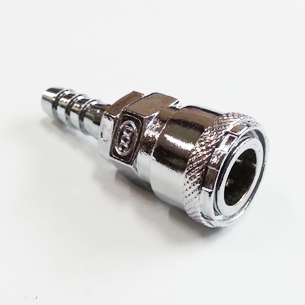
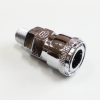
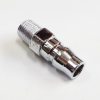
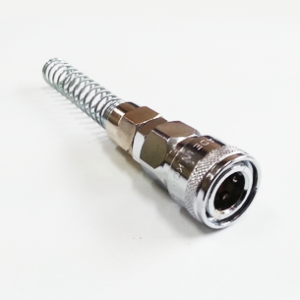
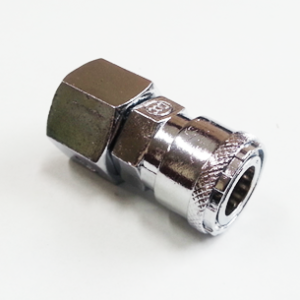
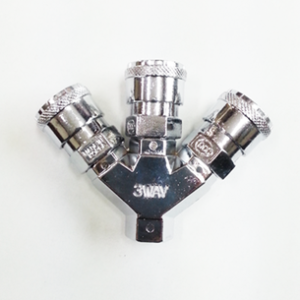
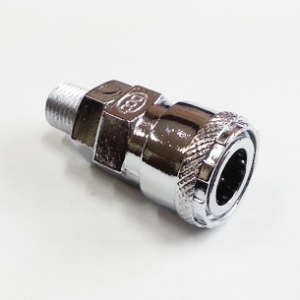
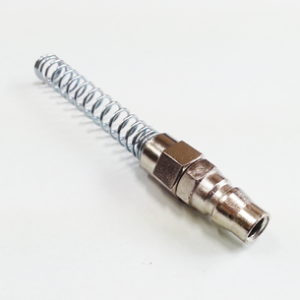
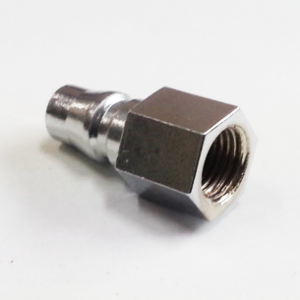
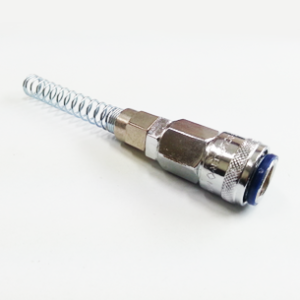
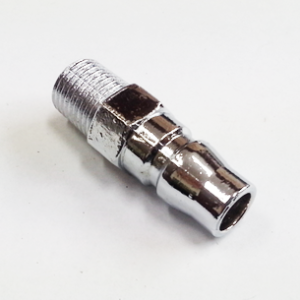
Reviews
There are no reviews yet.